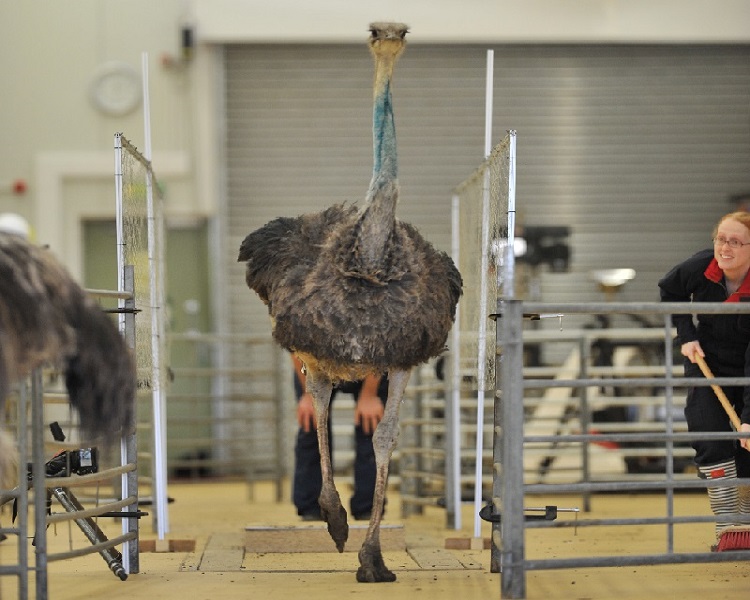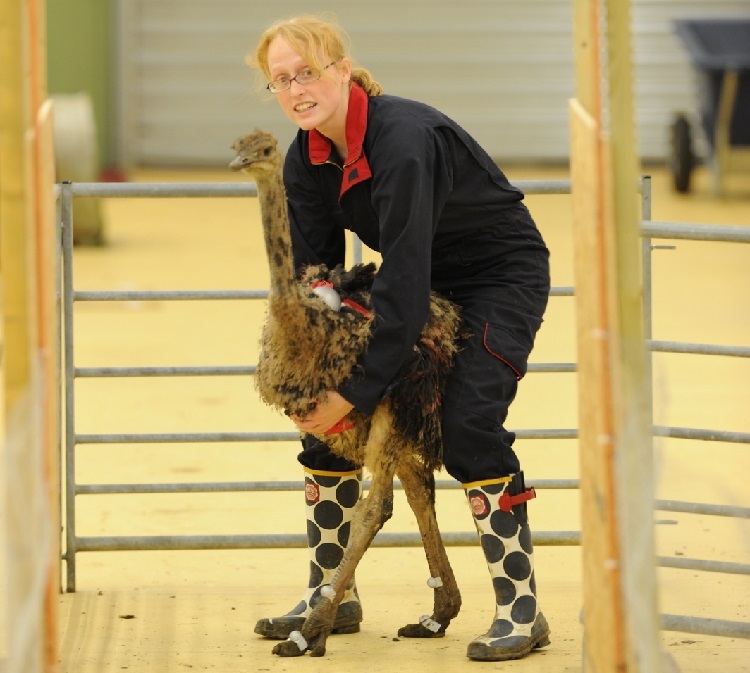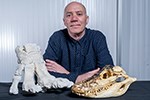Bird movement research featured in prestigious journal
Royal Veterinary College research into the movement of birds on the ground is featured in the latest issue of the Journal of Experimental Biology.
The article 'Don't break a leg: running birds from quail to ostrich prioritise leg safety ad economy on uneven terrain' is authored by Aleksandra Birn-Jeffery and Monica Daley, along with three researchers based in Oregon.
Dr Daley, Senior Lecturer in Locomotor Biomechanics at the RVC, supervised Dr Birn-Jeffery while undertaking her PhD at the RVC's Structure & Motion Laboratory. Dr Birn-Jeffery is now based at the University of Cambridge.

The article discusses factors that influence how birds choose to navigate uneven ground. Posture can dramatically affect how an animal manoeuvres across uneven terrain, and small animals that stand with a crouched posture could use a completely different strategy to large upright animals. This is because musculoskeletal strength does not increase at the same rate as body weight, therefore large animals face more of a problem with regards to injury. As a consequence of this insight, Dr Daley's research has focused on physical factors that have driven differently sized animals to select the strategy that works best for them.
Ground-dwelling birds span a great range of sizes, from heavy ostriches down to tiny crouched quail. Dr Daley and Birn-Jeffery investigated the strategies that birds ranging in size from 0.2 kg up to 117 kg use when running over a step. The movement of the birds was filmed and the researchers also measured the forces exerted by the birds as they strode along a runway and up and over the obstacle to find out how birds moved as they crossed the obstacle. To be able to compare across the range of birds, the obstacles were scaled to birds' leg length. Quails, pheasants, guinea fowl and turkeys were run across 10-50% leg length obstacles and ostriches were only run on 10% leg length obstacles due to safety concerns.

After four years of bird rearing, data collection and analysis, Dr Birn-Jeffery discovered that all of the birds, no matter how large or whether their posture was crouched or upright, negotiated the obstacle using the same strategy. Admitting to being surprised by the findings, Dr Daley said: “I thought that we would find that the small animals would crouch and extend the leg to buffer terrain variations and maintain a relatively smooth body motion,” and she also expected the larger birds to vault up onto the obstacle and down the other side. In fact, all of the birds observed appeared to launch themselves up onto the obstacle and crouch slightly on top of it before extending their legs as they descended back down.
Daley also investigated, along with a team from Oregon State University, physical factors (known as task-level priorities) that influence how birds negotiate uneven terrain, with the aid of a computer model to simulate running birds. Dr Daley explained: “We used the model to say, here are two alternative task level priorities, one of them being to prioritise stability (try to return to a steady gait as quickly as possible), or alternatively, to minimise energy cost”.
Simulating heavy birds with long legs and lighter birds with shorter legs, the team found that instead of evolving to prioritise stability when running over an obstacle, the simulated birds' movements were determined by the need to move economically and avoid injury.
See the Don't break a leg! project page for more information and video clips.
You may also be interested in:
-
RVC’s Professor John Hutchinson elected Fellow of prestigious Royal Society
John Hutchinson, Professor of Evolutionary Biomechanics at the Royal Veterinary College (RVC), has …

